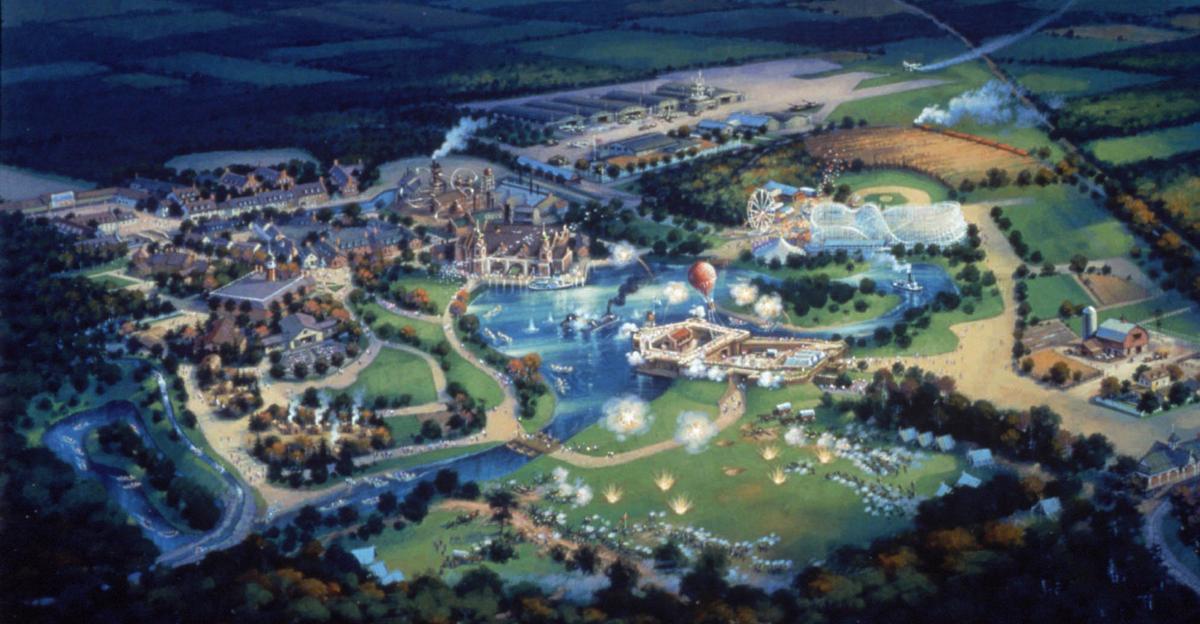Jack Varley unravels the fictional story of Disney’s abandoned theme park, Mowgli’s palace. Where did this urban myth come from, and is it so far from reality?
The idea of Mowgli’s Palace seems a very feasible (even desirable) one to any Disney aficionado. The concept is of a partially-constructed Disneyland resort that now lies abandoned in the American state of North Carolina. Supposedly, the resort was to cater to every member of the nuclear-family. Parents would kick back and enjoy a cocktail in the coastal sun while kids would enjoy a wide array of rides themed around the classic Disney film, ‘The Jungle Book’. The plans for the park were on track, until opposition by locals and environmental barriers caused Disney to give up on construction, leaving the ruins of an incomplete theme park somewhere to be found for any intrepid urban explorer who deigns to search for it. The only issue with this tale is that Mowgli’s Palace never existed at all – nor was it ever even proposed, discussed or planned by anyone at Disney.
This begs one vital question then: where did this mythos came from exactly? The origin of Mowgli’s Palace can be traced back several years to when ‘creepypastas’ (the internet version of telling horror stories around a campfire) were all the rage online. One of the more famous (or infamous, depending on how you look at it) examples of such stories was ‘Abandoned by Disney’, published by the user ‘Slimebeast’. ‘Abandoned by Disney’ tells the story of a man determined to find Mowgli’s Palace, only to find more than he bargained for when he is set upon by a demonic ‘Mickey Mouse’ mascot. It was since this story’s explosion in popularity that the Mowgli’s Palace legend snowballed into something that could easily be mistaken for being real.
While Mowgli’s Palace was never anything more than an urban legend, the incontrovertible fact remains that Disney has a long legacy of initiating, working on – then promptly abandoning – several theme parks. Take, for example, ‘Disney’s America’. Slated for construction in Virginia, Disney’s America was to be a theme park based around the telling of American history. Each section would have a different historic theme (such as ‘Victory Field’, which was to tell of America’s participation in World War Two). This park was anything but fantasy, being a serious ambition for the Walt Disney Company. $850 million had been devoted to the park by the company, while the state of Virginia was so enthusiastic about the future benefits of tourism that they too contributed $163 million towards its construction.

Ultimately though, this was not to be. Disney was soon embroiled in a series of lawsuits instigated by local residents and landowners, who were furious at the prospect of a new Disney park being built near their small community. Disney was reportedly shocked at the hostile reception, with CEO Michael Eisner remarking: “I expected to be taken around on people’s shoulders”. Fearing the public relations nightmare that would have stemmed from such a huge corporation fighting regular folk in court, the plans for ‘Disney’s America’ were discretely dropped, with little more than ambitious concept art and dust-gathering promotional material remaining as its legacy.
The failure of ‘Disney’s America’ was no anomaly, either. In 2002, Disney gave up on ‘Disney’s River Country’, a water park located near the city of Bay Lake in Florida. Boasting multiple slides, pools and children’s areas, the run-down remains of the park can still be found today (albeit free of any demonic infestations). The park is located close-by to another Disney property, ‘Discovery Island’ – which too has been left to rot since 1999. While not actual Disney properties, imitation parks can be found in similarly dilapidated condition in Asia. Japan has ‘Nara Dreamland’, while China boasts the ruins of ‘Wonderland’, both of which being abortive attempts to cash-in on the Disneyland success with copy-cat theme parks.

While failed projects and unrealised dreams are an inevitability of such a high-risk business as the construction of theme parks, it can be safely confirmed that Mowgli’s Palace was never such an example. As Disney looks to the future for its attractions, the focus is inevitably being placed on preserving what they already have (with park closures due to the Coronavirus pandemic costing the organisation $6.9 billion in 2020 alone). With all this considered, there is simply no need for the invention of fancifully concealed parks that Disney hopes to quietly sweep under the proverbial rug – there are enough of those as it is.
Header image credit: Daily Mail

